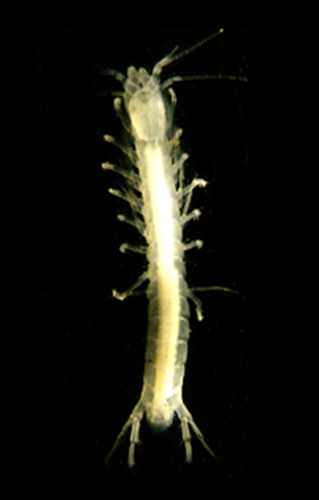
Stygofauna
The Stygofauna & Groundwater Dependent Ecosystems Specialists
'Stygofauna' is the general term for all animals that occur in subsurface waters that include aquifers and cave systems, although it more specifically relates to subterranean invertebrates. Stygofauna community composition is dominated by crustaceans (macro and micro) although there are also many species of Gastropods (snails, clams) worms, flatworms and small numbers of vertebrates such as fish and eels, and insects. The crustaceans make up the largest diversity of organisms in groundwater environments and include many primitive groups often referred to as 'living fossils'. These include the Syncarida (Bathynellacea and Anaspidacea), Amphipoda, Isopoda, Thermosbaenacea, Spelaeogriphacea, the Decapoda such as crayfish and shrimps, as well as many microcrustacea such as Copepoda and Ostracoda.
Stygofauna have evolved specialised morphological and physiological adaptations that include:
• Blindness often with the complete loss of eyes
• Unpigmented – colourless
• Slow metabolisms
• Long life spans
• Increased tactile and chemoreceptors
Stygofauna are also highly endemic with many Short Range Endemics (SRE) species. They are often of
ancient lineages with linkages to the past Gondwana and Pangaean supercontinents dating back as far as
350 million years. As they typically have very narrow environmental tolerance ranges they can also be extremely sensitive to the water quality and habitat condition changes and, are thus useful indicators of groundwater health and climate change.
Australia’s subterranean faunas are biogeographically distinct in the world and Eastern Australia including NSW, Victoria, Tasmania and South Australia is biogeographically distinct from the other Australian states. It has been suggested there may be as many as 50 000 to 100 000 terrestrial and aquatic species world–wide with Australia featuring as a groundwater biodiversity hotspot.
"We recommend that all development applications and EIS adopt the WA protocols for sampling Stygofauna, as assessments will be consistent with those in other states."






